Communities, Conservation, and Convergence: A Hope for Pirpanjal Markhor
Conservation is the art of finding a meeting ground amidst conflicting interests and priorities. It is about finding effective solutions through integrative negotiations. In order to start or develop a successful conservation program, it is important to make the local communities realize the significance of conserving a species and involve them in the process.
Wildlife Trust of India’s Kashmir Markhor Recovery Project aims in enhancing the population status of the once-thought-extinct Pirpanjal Markhor (Capra falconeri cashmeriensis) in Jammu and Kashmir. They are only found in India’s Union Territory of Jammu and Kashmir (J&K) and the species is categorized as Near Threatened on the IUCN Red List of Threatened Species and Schedule-I of the Wildlife (Protection) Act of 1972.
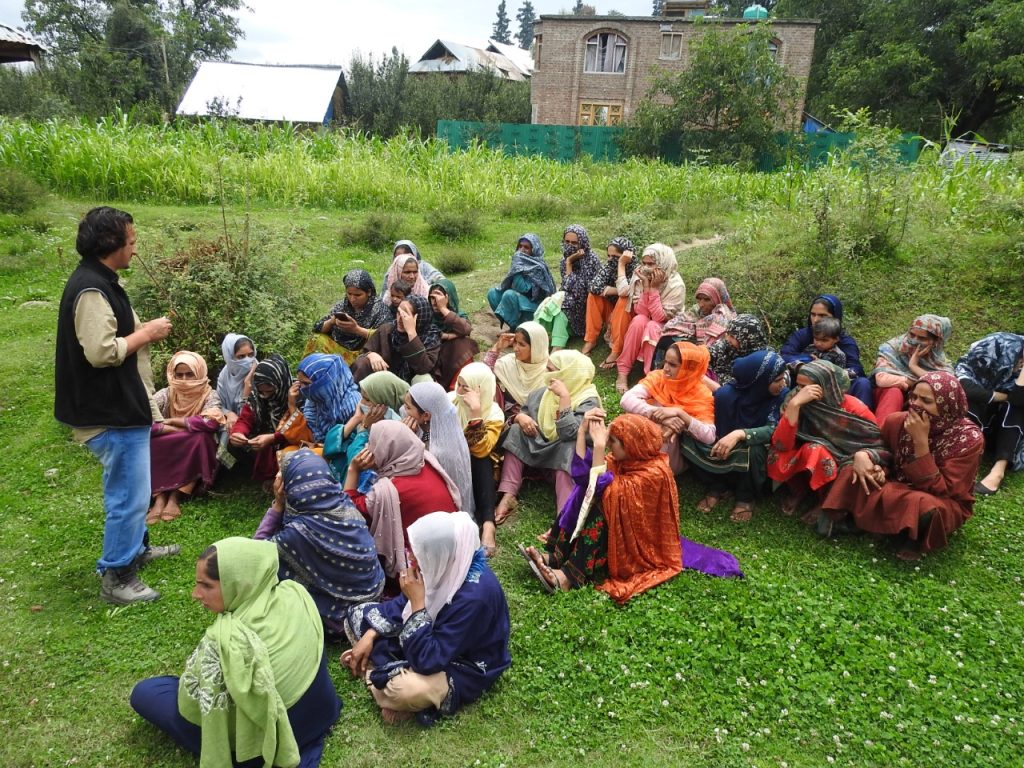
WTI field sociologist Sameer Khazir engaging with local communities through a participatory approach; Photo: WTI
The project is a blend of biological and community-driven approaches. It works with the broader objective of strengthening of conservation of Markhor in Kazinag NP and Hirpora WLS by establishing a community-based conservation process and reducing local communities’ dependency. This particular conservation method is founded on the ideas of equity, devolution, and local empowerment because compared to the past, nowadays it is important for conservation programs to acquire a higher place in the government order.
Facilitating better communication and cooperation between various government departments can help not just better safeguard conservation interests, but can actually assist in generating more resources for community-based conservation. For this WTI has been strategically partnering with the government to improve the sustainability of community-based efforts.
The project team conducted the social surveys and assessed the dependence of the local as well as the migratory herder communities on the natural resources of the Kazinag NP and Hirpora WLS, and also catalyzed and channeled the existing Government schemes/programs through schematic convergences.
The primary goal of this project component is to turn people into collaborators in the preservation of Markhor. By changing people’s attitudes regarding markhor and wildlife conservation and lowering their reliance on forest resources will positive changes be brought about that will certainly improve Markhor’s chances for conservation.
Markhor watchers: The Green Protectors
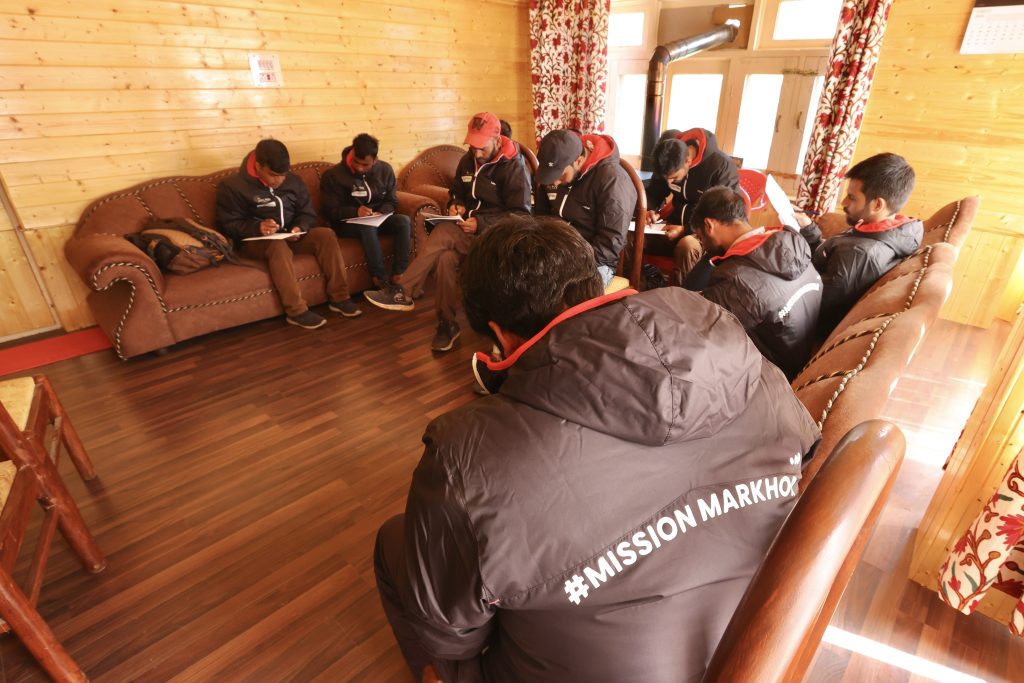
Capacity building and training of Markhor watchers; Photo by Udhayan Rai Pawar
The social surveys and participatory planning revealed livestock grazing, poaching, and other anthropogenic pressure as the major threats to the survival and conservation of Markhor. To address the identified threats and nurture awareness of the species and its conservation, the project operationalized five teams in the protection and monitoring of species through various community participation approaches.
Registered as ‘Markhor Watchers’ their role is to support WTI and the Department of Wildlife Protection J&K-UT in controlling and monitoring poaching activities. The teams were trained on how to collect and share information on wildlife poaching incidences and were also introduced to important facets of identifying hoof marks, scats, and pellets. The team was also trained on how to use GPS devices on the field and the Markhor watchers were also provided with waterproof jackets and high-altitude trekking shoes to carry out the intelligence gathering.
The squad serves as a shining example of how people can change, and how local communities could become the best protectors of nature once they understand their heritage is threatened and their children’s lives would be poorer if the forests and the species that defined their cultures were destroyed.
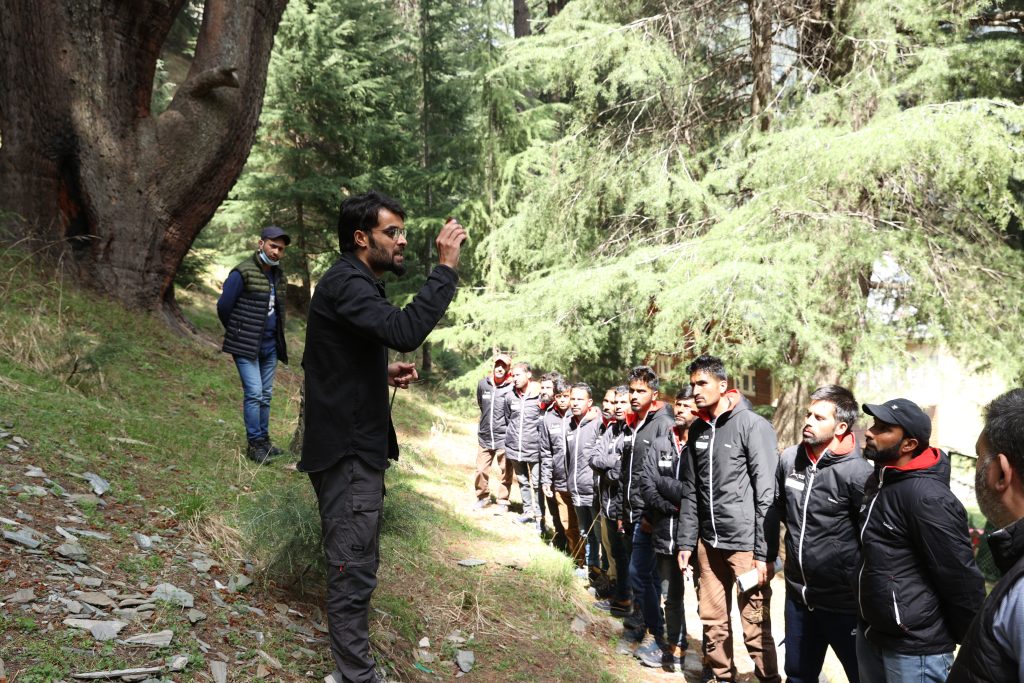
Pre-training assessment of the Markhor watcher group being trained; Photo by Sameer Khazir
The Markhor watcher groups also help to conduct wildlife surveys in the company of field conservation researchers, who say that individuals from among them promise to become fine natural history communicators. Watcher members including a total of 20 volunteers have been deployed in five Protected areas like Lachipora wildlife sanctuary, Limber wildlife sanctuary, Tattakuti wildlife sanctuary, and Naganari conservation reserve. Their patrols help to gather information and document the status of flora and fauna and also curb illegal activities.
The team is dedicated and determined and one of the major contributions and achievements was getting the guns of local hunters seized with the help of the Department of Wildlife Protection J&K (2021-2022) and deposited (in police stations) during critical periods of mating and birthing of markhor.
Eco-tourism initiative: A Sustainable Livelihood
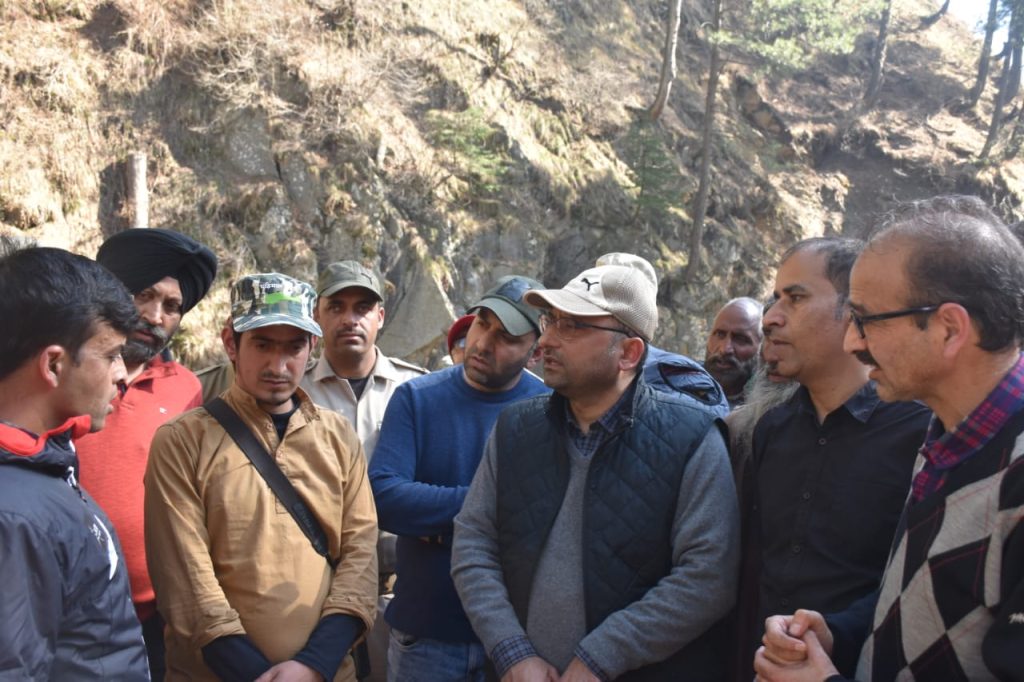
Conservator of forest circle North taking feedback from Markhor watcher group in Limber Wildlife Sanctuary
The ongoing efforts in addition to linking the communities with other existing development programs, WTI and Depart of wildlife protection with the support of the Astral foundation have been exploring the opportunity for linking ecotourism with the local livelihoods as the potential for the enterprise already exists in Kazinag National Park. Interestingly, through various rounds of participatory planning and Focus group discussions, eco-tourism was the preferred choice of the additional livelihood with local communities showing a keen interest in promoting Kazinag as an eco-tourism destination model and are willing to work towards it.
Several meetings with the DWP, J&K officials, and the tourism department were held in an endeavor to promote and establish home stays for eco-tourism in Kazinag National Park.
Two homestays have been identified – one in the Babagail village of Limber Wildlife Sanctuary and the other in Lachipora Wildlife Sanctuary of Kazinag National Park. These are identified with participatory planning and joint consensus and agreement with the local communities. The homestays are being officially registered and the nature guides are to be formed. This will be followed by the skill development and training of nature guides and the constitution of the societies to run the eco-tourism venture. The Department of wildlife protection has also recommended trekking routes for visitors to the area.
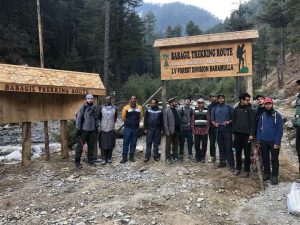
Trekking routes identified in limber wildlife sanctuary by Forest department; Photo by WTI
In creating and supporting eco-tourism ventures in the local communities dependent on the Markhor habitat, the Wildlife Trust of India, the Department of Wildlife Protection, and the Lachipora Battalion Army (BN) carried out a two-day joint expedition for promoting eco-tourism and Kazinag in Lachipora wildlife sanctuary. The Expedition was carried out in the Shri, Brethpathre, Nagpathre areas of Lachipora wildlife sanctuary. During the trek, the team happened to interact with the local communities and sighted many birds and mammals like markhor and black bear.
With meticulous planning and actions, conservationists can catalyze collaborative multi-sectorial efforts for biodiversity conservation and human welfare. However, such multi-sectorial cooperation has a reliance on the government’s willingness and partnership.
Similarly, when the desired results are received, it is surely a cause for celebration. The persistent work with these communities through schematic convergences and setting up of conservation-linked livelihoods has helped the organization to win the award of commendation on 15 August 2022 by Govt. of Jammu and Kashmir Sub-Divisional administration URI(Baramulla) for the exemplary contribution towards community-based conservation efforts.
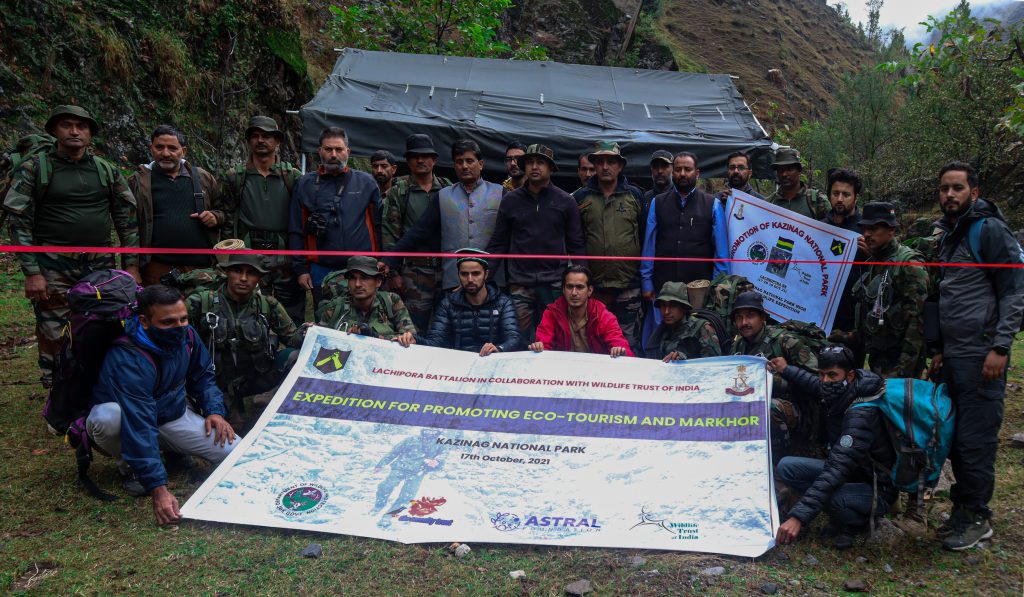
Expedition for promoting eco-tourism and Markhor in Lachipora with WLD officials and Lachipora; Photo by Dar Shahid
This award would not have been possible without the generous support of the donors. The socio-ecological systems that WTI works in and the threats to biodiversity are too dynamic to allow for any sense of complacency. If the desired results are not achieved, it is not the failure of community-based conservation, the process needs to learn from experiences and improve the interventions and partnership with local communities to do things differently or do different things. A huge thanks to Serenity Trust too for their support in the project and helping us save the largest goat in the world.
Sameer has been working in the field of community development for over six years and is passionate about working with various forest and wildlife-dependent communities on issues of livelihoods and clean energy.









